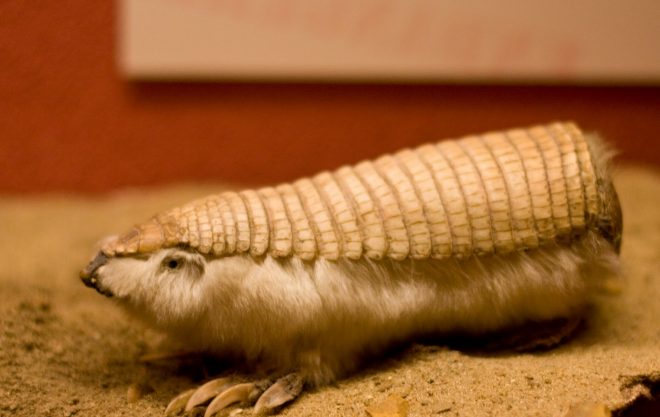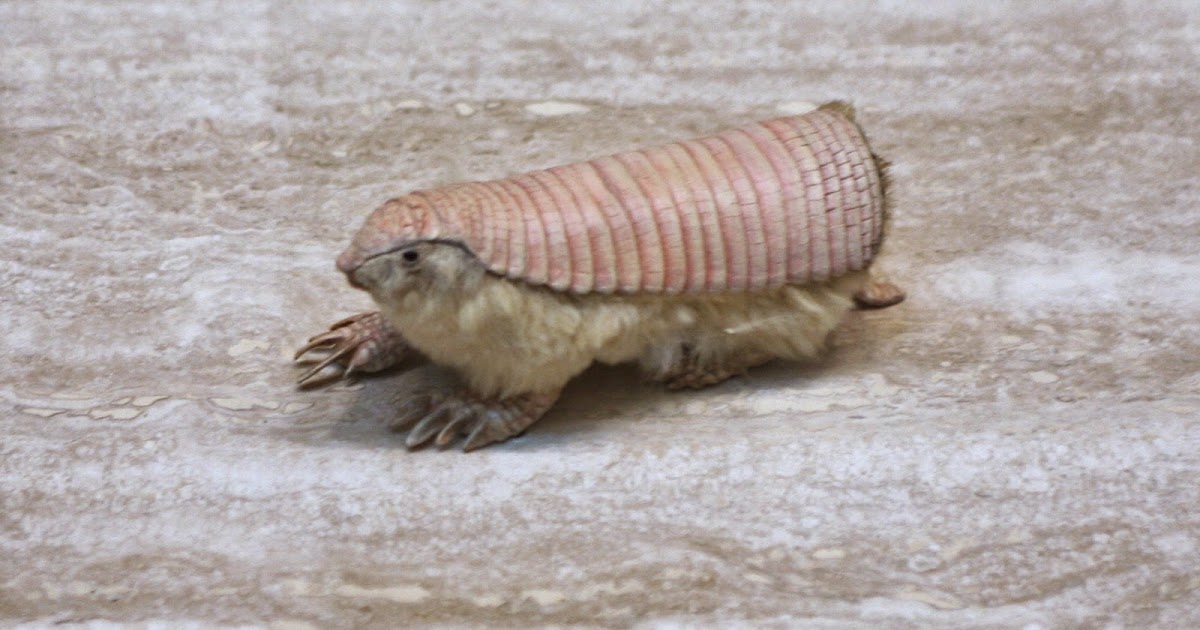

Wild boars are also a significant threat. Two of the primary predators of Pink Fairy Armadillos are domestic dogs and cats. Further, when on the surface, Pink Fairy Armadillos are at risk of predation since they cannot escape by burrowing back underground. Once it is in the open, it is much more likely to get wet, and therefore cold, and therefore die of hypothermia due to a lack of insulation (again, no body fat). When significant rains occur, the Pink Fairy Armadillos is forced to leave its burrow or else drown and the burrow fills with water. Another threat from climate change has to do with rainfall. As soil temperatures change the ability of these small armadillos, which are able to store very little body fat, to thermoregulate and metabolize nutrients may be greatly effected. Their subterranean life also makes these animals particularly sensitive to the effects of climate change. Pink Fairy Armadillo at the entrance to its burrow. These include highly reduced eyes, but exceptional senses of touch and hearing.
[1].jpg)
Along with their underground lifestyle come several predicable adaptations common to organisms that have evolved to live in dark habitats. Pink Fairy Armadillos spend the vast majority of their lives creating and moving through these underground tunnels where they generally live as solitary individuals or, sometimes, in pairs. They can burrow so fast through the sand that they are sometimes referred to as ‘sand swimmers’ by native peoples of the area. The advantages of having such impressive hardware becomes obvious when the creature digs. Those huge claws are actually so big that these armadillos can have trouble walking on firm surfaces. Geographic range of the Pink Fairy Armadillo. It digs in search of ants (its primary food source), worms and other subterranean invertebrates that it feeds on.

Any idea what the smallest species of Armadillo is? You guessed it! It is the tiny (only 3 or 4 inches long), and ever so cute, Pink Fairy Armadillo ( Chlamyphorus truncatus)! This little resident of a small area of central Argentina is found in sandy desert areas where it lives by digging under ground with the huge claws in has on its front and rear feet.


 0 kommentar(er)
0 kommentar(er)
